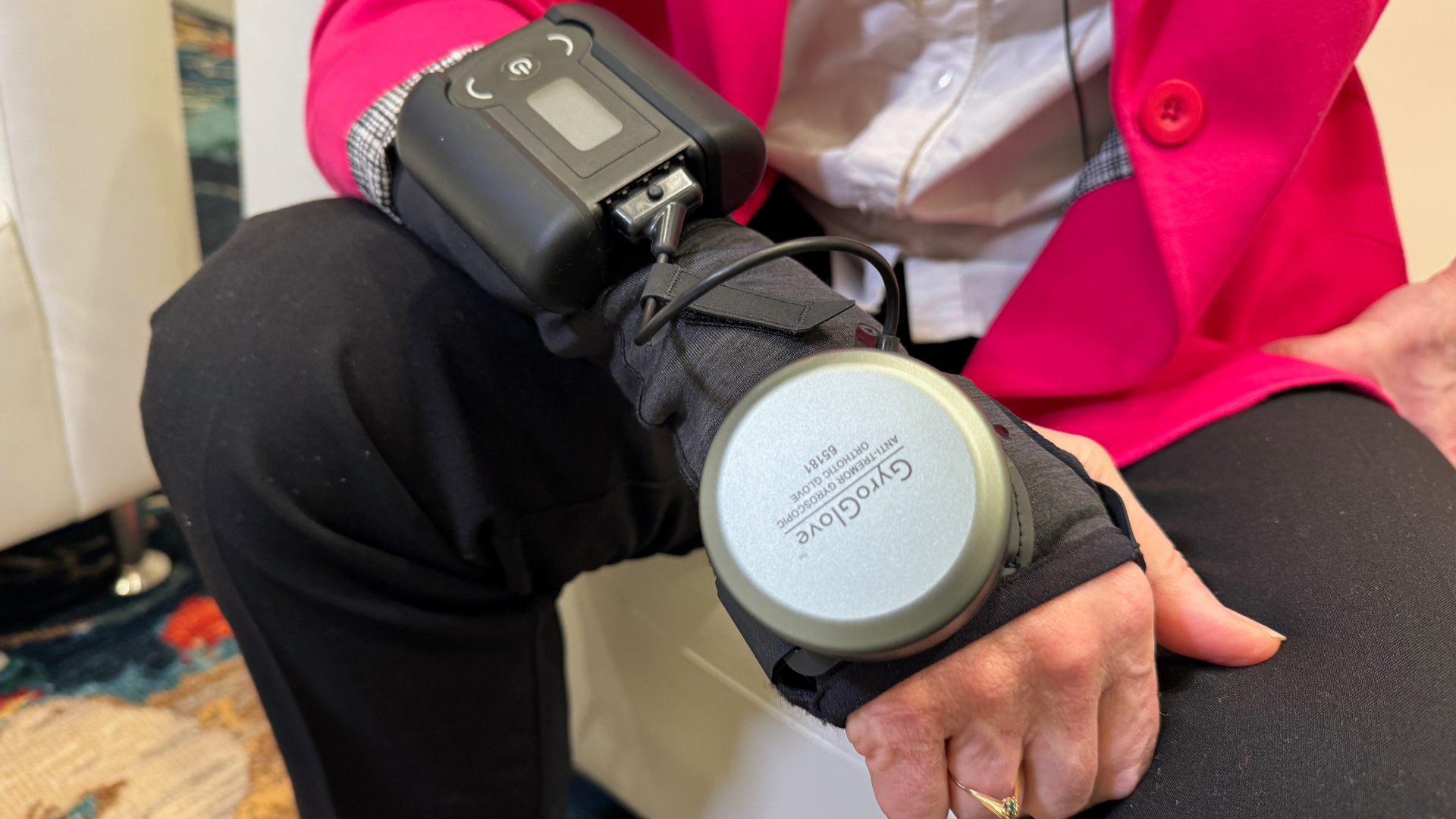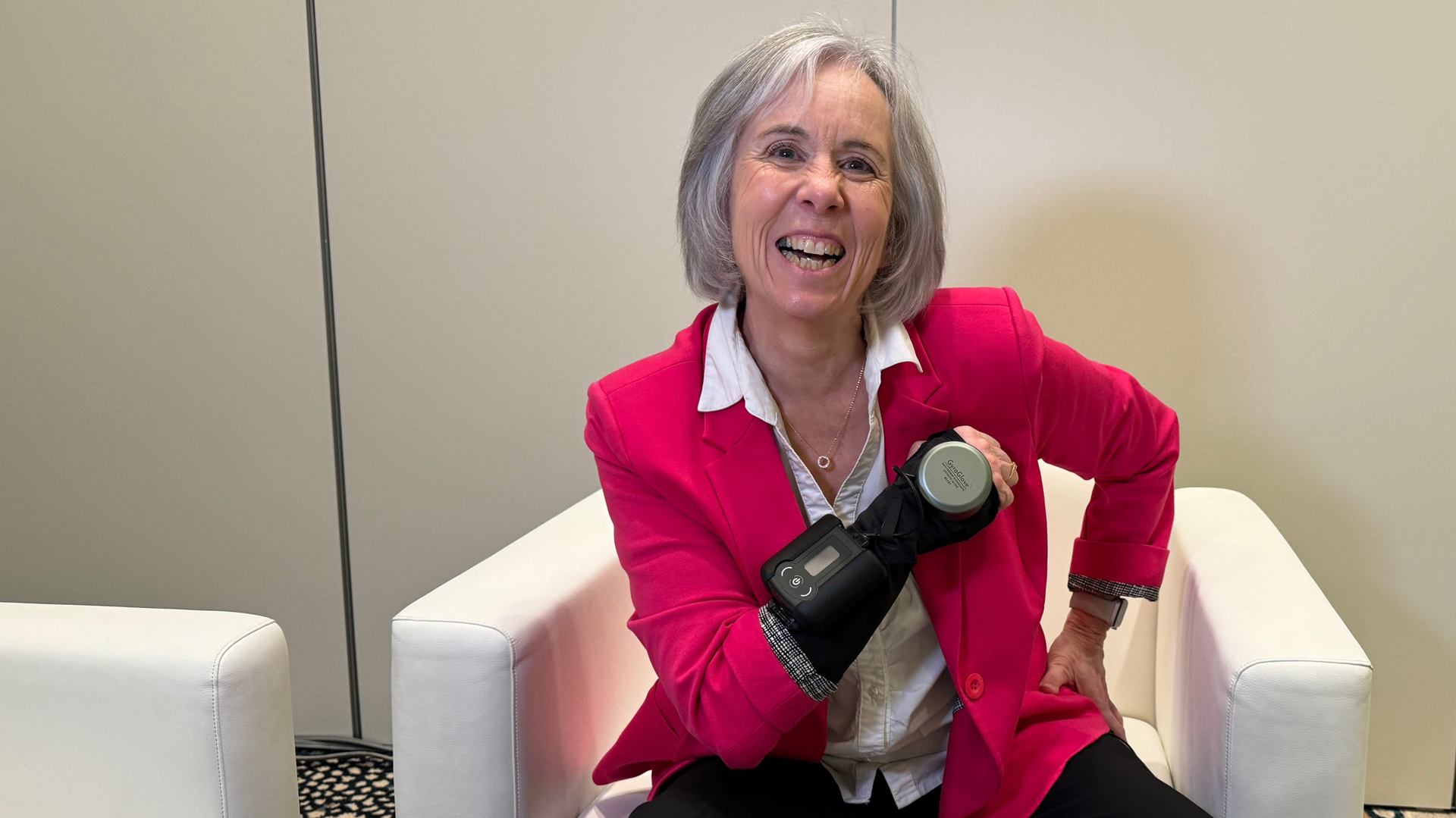This glove uses a gyroscope to counter Parkinson’s tremors, and I saw what a big difference it makes
An important health device makes a CES splash

Roberta Wilson-Garrett smiles sweetly at me and explains that the struggle to draw a spiral on a piece of paper begins not with putting pen to paper but simply trying to get a proper grip on the writing implement. Wilson-Garrett has suffered from Parkinson’s disease for half a dozen years, but is happy to show me how she struggles, simply so she can also show me how, with new technology, she does not.
Wilson-Garrett initially pushed the pen through the paper, and we retrieved a new sheet. The spiral that Wilson-Garrett ultimately, and very slowly, drew is small and ill-formed. She pushed aside that piece of paper and then I watched as Dr. Faii Ong helped her don the Gyro glove, an FDA Class-1-approved device that can potentially counter her tremors.
Ong has been developing the glove for as long as Wilson-Garrett has had Parkinson’s, but they did not meet until Wilson-Garrett attended the World Parkinson’s Congress in Barcelona, Spain, where GyroGear – the company Ong founded – was showing off the latest version of the glove.
Initially, Wilson-Garrett saw the glove and didn’t try it but when the stress of the conference increased the uncontrollable tremors that can start in her right hand and run up her arm, Garrett decided to try the glove. The effect was immediate.
Dr. Ong explained that the device is quite simple. It has a large gyroscopic motor that sits on the back of the glove, so it rests on the back of the hand and that’s attached to a battery pack. There is no complicated AI here, and the glove has no idea of the wearer’s intentions. Instead, the gyroscope has one goal: to keep its internal top upright. A tremor would send it toppling over to one side or the other, so it counters the tremors to keep itself upright. That action, though, has had a radical impact on Wilson-Garrett's tremors.

As I sat next to Wilson-Garrett, she powered up the glove, a process that takes just a few moments and which she likens to a plane preparing on a runway to take off. I noticed a gleam in Wilson-Garrett’s eyes as the GyroGlove’s monochrome LCD presented a big check mark, indicating it was ready to go.
Aside from the two pieces of hardware on it, the all-black GyroGlove looks like a pretty standard wrist brace. It’s not custom, but there are a few small straps to customize the fit.
Sign up for breaking news, reviews, opinion, top tech deals, and more.
With the glove on and powered up, Wilson-Garrett grasped the pen with ease and then quickly drew a spiral. The steady vibration of the GyroGlove not only appeared to counter her tremors, but added just a bit of bumpiness to her line, which flowed out of the pen in what could only be described as a nearly perfect spiral.
Wilson-Garrett told me that the impact of this device is not to be underestimated in her life. She recently got a unit of her own and said that she no longer has to consider if she can make herself a cup of coffee, eat something using an implement, or button her shirt.
Still, GyroGlove is not a cure. It’s not the drugs Wilson-Garrett takes to help control her symptoms, and has no impact on the progression of the disease. Still, it appears to give her a little bit of her life back, and maybe, for now, that’s enough.
Like most potentially game-changing health devices, GyroGlove is not cheap. Each one currently costs $5,899 and while there is worldwide availability, the UK-based GyroGear team couldn’t tell me how much they might cost outside the US.
We’re covering all of the latest CES news from the show as it happens. Stick with us for the big stories on everything from 8K TVs and foldable displays to new phones, laptops, smart home gadgets, and the latest in AI.
And don’t forget to follow us on TikTok for the latest from the CES show floor!

A 38-year industry veteran and award-winning journalist, Lance has covered technology since PCs were the size of suitcases and “on line” meant “waiting.” He’s a former Lifewire Editor-in-Chief, Mashable Editor-in-Chief, and, before that, Editor in Chief of PCMag.com and Senior Vice President of Content for Ziff Davis, Inc. He also wrote a popular, weekly tech column for Medium called The Upgrade.
Lance Ulanoff makes frequent appearances on national, international, and local news programs including Live with Kelly and Mark, the Today Show, Good Morning America, CNBC, CNN, and the BBC.